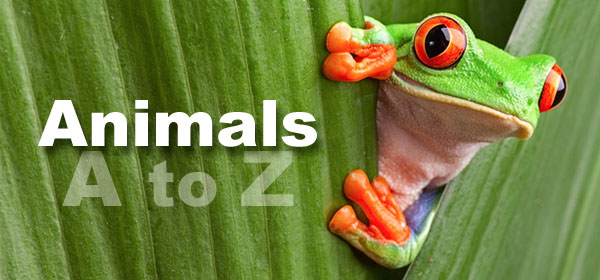I’m going to let you in on a little secret. What if I told you that there was something you can do to your garden, flowerpots and baskets that could directly help wildlife? Instantly! What if I told you that it involves doing nothing? That’s right, nothing. It involves sitting back putting your feet up and making no effort at all. Sounds easy right?
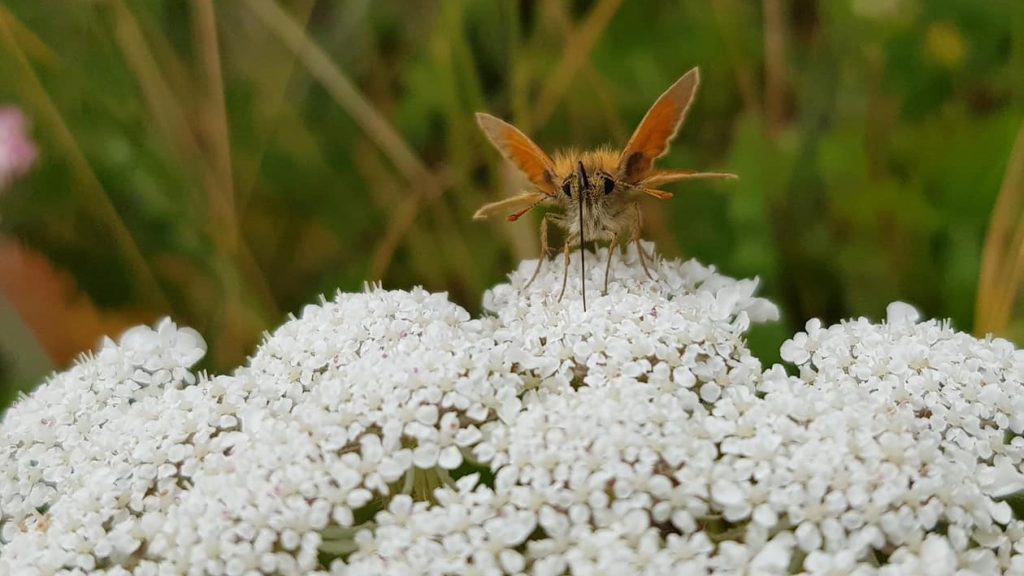
The Spring drought in 2020 hit our British wildlife hard. There were 40% less daisies than in 2019 and 56% less dandelion flowers. I’m going to tell you how to take part in a challenge which can provide enough nectar for ten times the number of pollinators in your green spaces. I say challenge, but what I’m actually going to do is encourage you to be lazy.
No Mow May
Plantlife’s No Mow May campaign started in 2019 and encourages you to banish the lawnmower during the month of May to help your local wildlife. Since the 1930’s we have lost almost 7.5 million acres of our wildflower meadows across the UK. Loss of our nectar rich flowers have been devastating for our pollinators. This has huge knock-on effects in nature. It causes declining insect populations as well as insect-eating birds! Outrageous right?
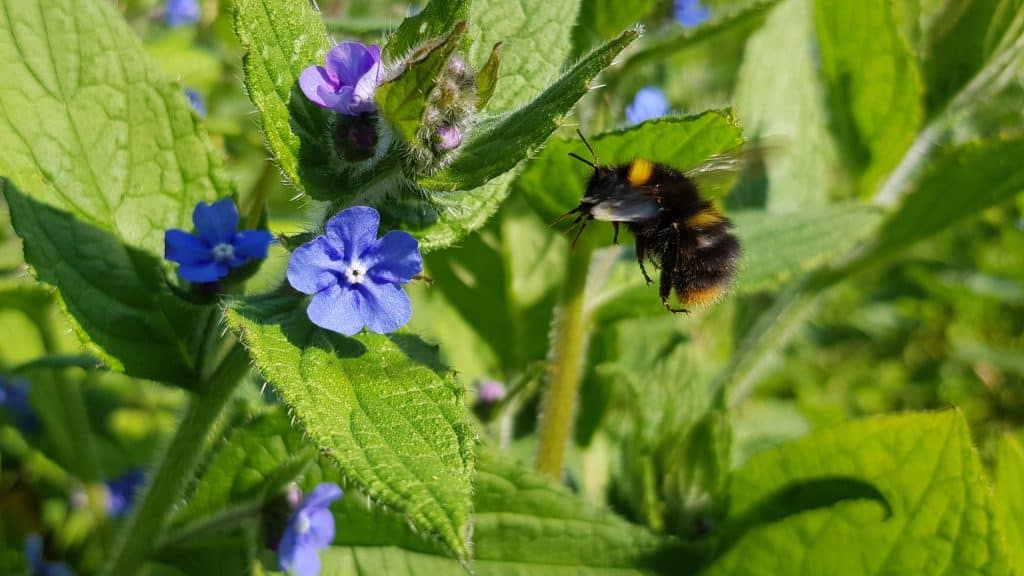
To take part in No Mow May you don’t have to let all of your garden turn wild, mowing just a patch of grass if you need shorter turf in places can look beautiful. Also, No Mow May is not a plea to ditch the mower permanently. Just to give your lawns a bit of a breather and leave a longer period between mowing to allow wildflowers to bloom. Check out Plantlife’s Every Flower Counts citizen science survey HERE. Results from the 2021 “Every Flower Counts” survey were staggering. Participants reported over 250 plant species and counted over 465,000 flowers! What an amazing effort. Myself, family and friends have taken part in this project, and the results can be stunning.
A neatly cropped lawn really is barren for wildlife. But if you manage your lawn the right way, then your garden can be an absolute wildlife haven. This is fantastic for our beautiful butterflies, bees and beetles who need all the help they can get these days! Welcoming these creatures into your green spaces will also encourage birds to visit as well. Nothing makes me happier to hear a Song Thrush singing in the garden. Or to have a Robin follow me along, hoping that I’ll uncover a tasty insect for it to pounce on.
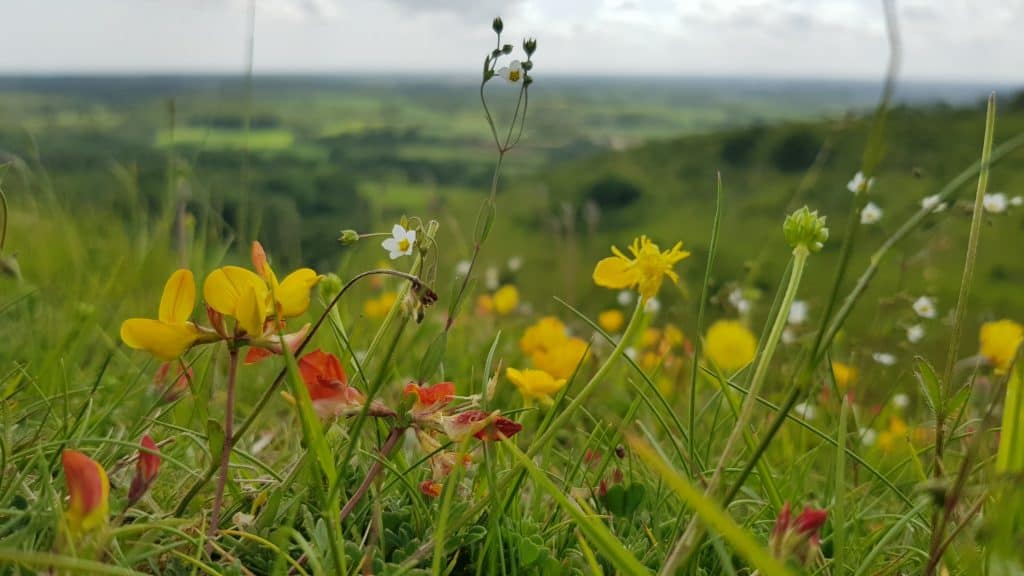
Everyone is familiar with Daisies, Clovers, Buttercups and Dandelions which are the first to arrive on the scene when allowed to do so; but I’d love to share some of my photos with you of my favourite wildflowers that you could see cropping up on your lawn if you don’t mow the grass as often. I can highly recommend the Plant Net app for your phone if you would like some help with flower identification. You can literally take a photo of a flower and the app will have a go at finding out what it is for you. And it’s free! You can download it here.
My favourite common wildflowers.
Herb-robert
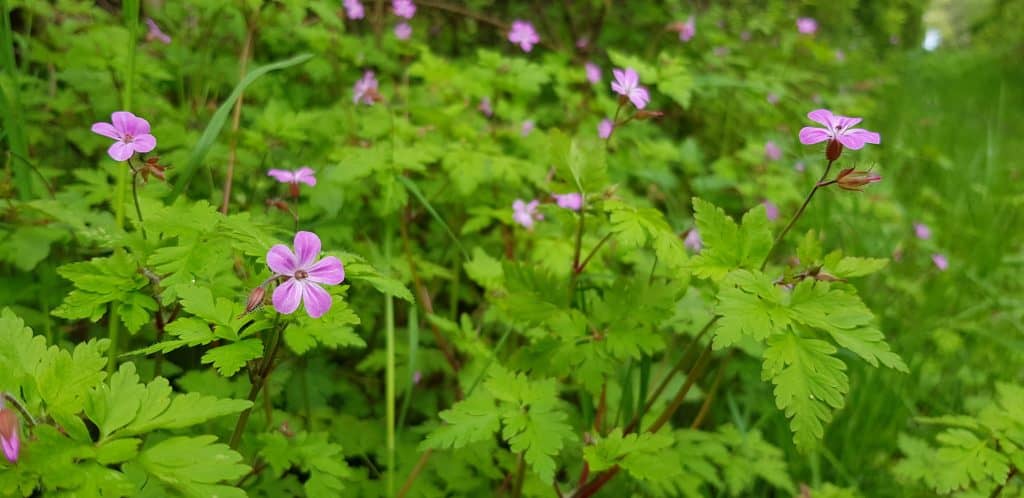
One of my favourite wildflowers, they are just a joy. They are best seen throughout the spring and summer, from April right through to September. Whilst the bright pink flowers are beautiful, they are also sometimes called “Stinking Robert”. This is because the hairy stems produce a strong unpleasant smell. This makes me love them even more. Little rebels! You will just have to give one a whiff if you spot one now right?
Bird’s-foot Trefoil
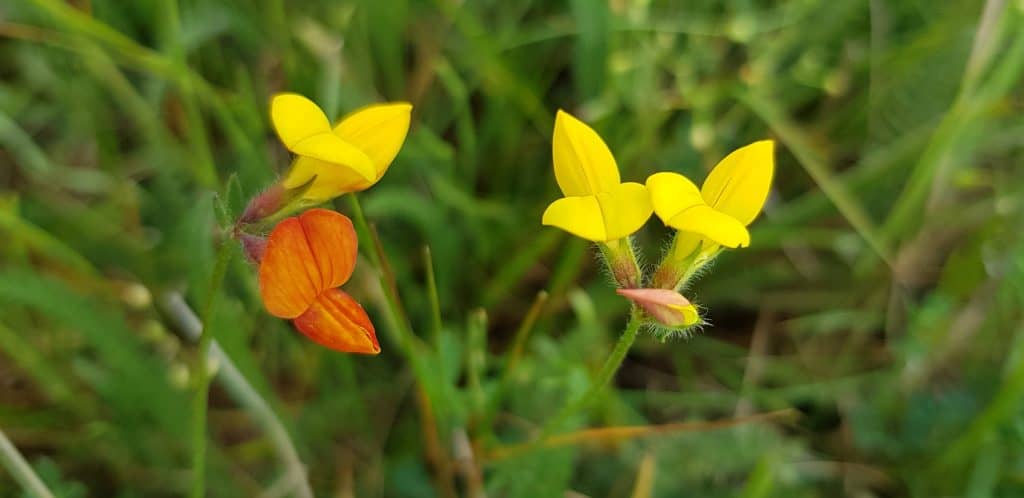
Another wildflower that you’ll see everywhere once you know what it is. Again, another great all-rounder as you can usually see them from May through to September. It doesn’t do our stomachs much good to eat but it is a great source of nectar for insects. The “bird’s foot” part of it’s name comes from the shape of it’s seeds which look like, you’ve guessed it, a bird’s foot!
Germander speedwell
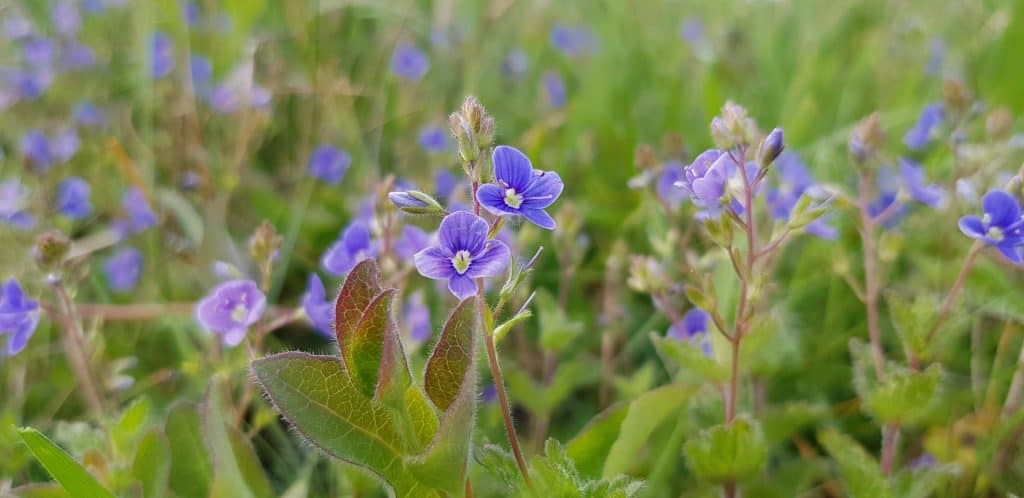
A wildflower that has been out for a little while now as they flower from March to July. If you have a patch of Speedwell on your lawn, they creep over the surface of the ground adding a splash of colour. These pretty blue flowers were once believed to bring good luck to travellers, and when worn through your buttonhole they would “speed you well” on your way.
Dead-nettle
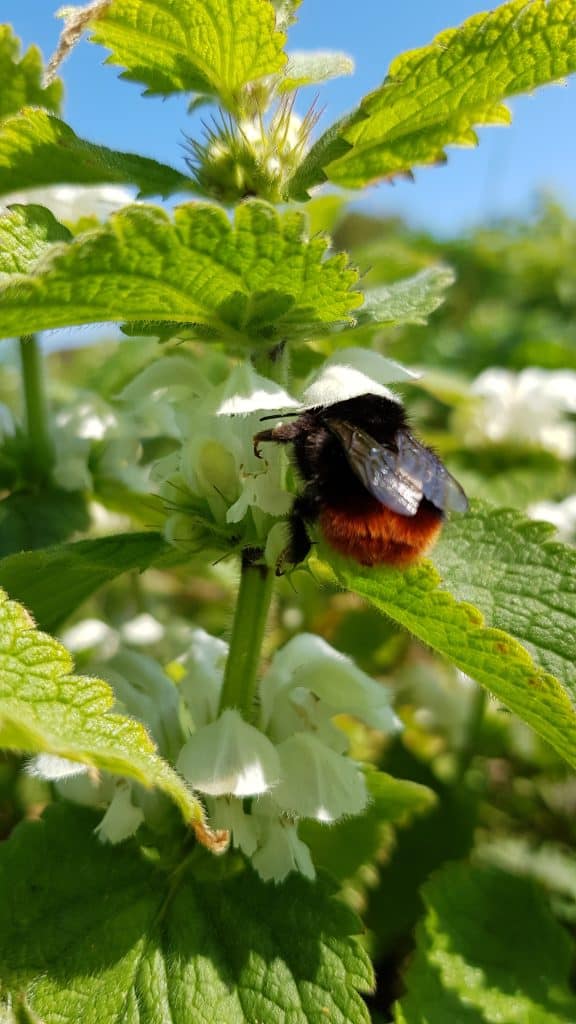
I couldn’t choose which Dead-nettle was my favourite because they are both always teaming with bees! Nettles get a bad rep, but even the nettles that do sting are brilliant for wildlife. They are the food plant for many caterpillars, and birds often take advantage of the protective power of stinging nettles and hide their nests away in them if they can find a good patch.
But in this photo, we have White Dead-nettle. This along with Red Dead-nettle are my favourite types of nettles. As their name suggests they don’t sting. Red Dead-nettle is usually out first flowering from March to November. White Dead-nettle is also a plant that can be seen most of the year, blooming from May to December. A plant that is good for us too as the flowers and young leaves are edible and can be used in salads or cooked like vegetables
Violets
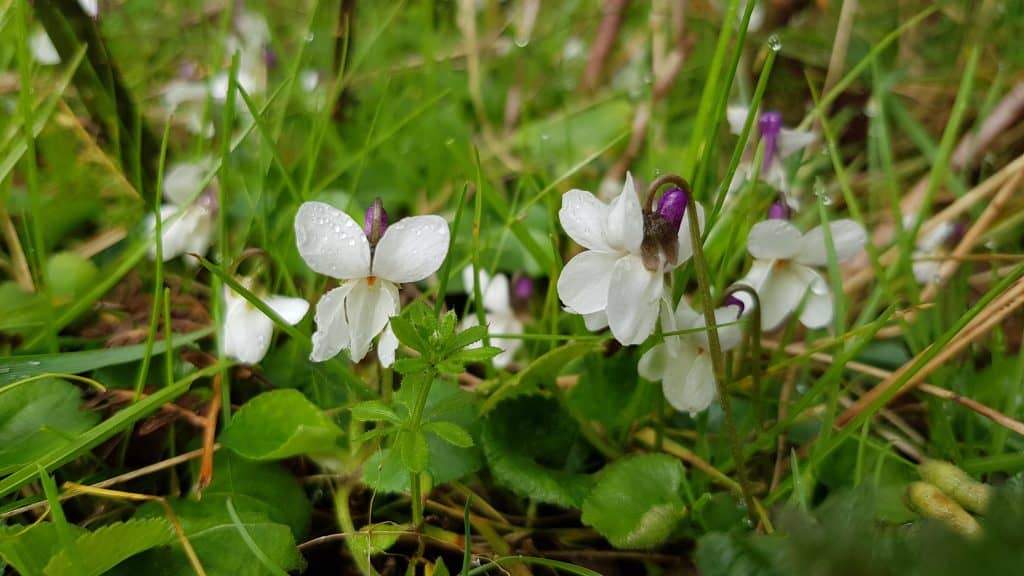
If you continue to mow the lawn less often you might see either Sweet Violets or Dog Violets in March and sometimes April. Violets are normally purple, so I was delighted to see this little group of white Sweet Violets crop up one year. They don’t seem to have come back again this year, but Sweet Violets are my favourite violet species.
As their name suggests they have a very sweet smell, but interestingly you can only smell it for a short while. This is because the chemical that produces the smell, Ionine has the power to deaden the smell receptors in our noses temporarily once it has been sniffed.
Stitchwort
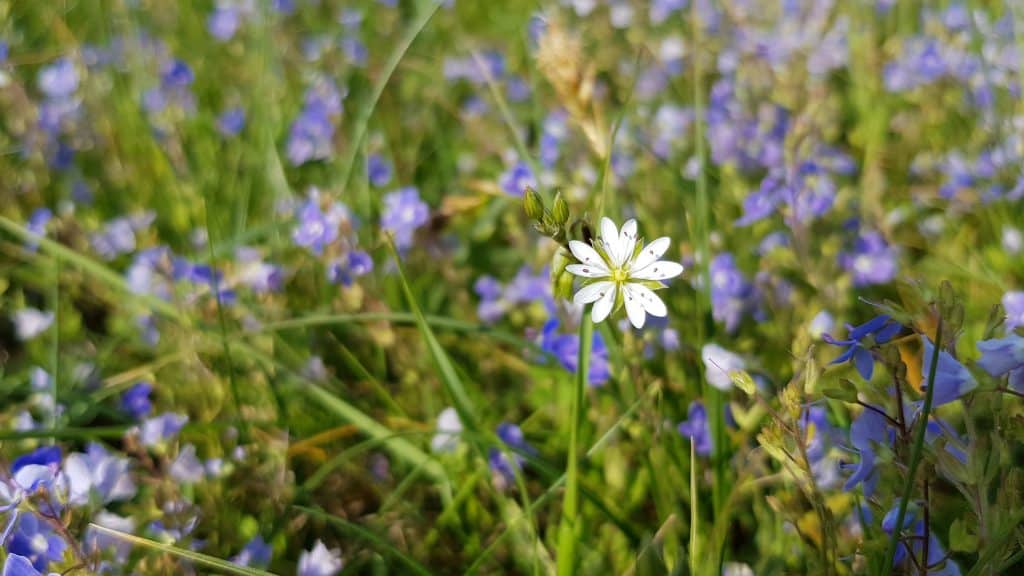
The first time I saw this group of flowers I was fascinated by their petals which are divided length-ways halfway or more depending on the species. Lesser Stitchwort and Greater Stitchwort can both be seen in late spring and summer. My photo features the sweet little star-shaped flowers of Lesser Stitchwort. Whilst the tiny flowers only last for three days, the plant continuously flowers throughout the summer months.
Special occurrences
If you take part in No Mow May you might even be lucky enough to have more unusual wildflowers turn up, and who knows maybe even a rarity! My favourite to turn up on my patch are Orchids. THE flowers that got me into wildflowers rather than focusing on birds. They transformed me from a bird nerd into a full time nature nerd.
Bee Orchids
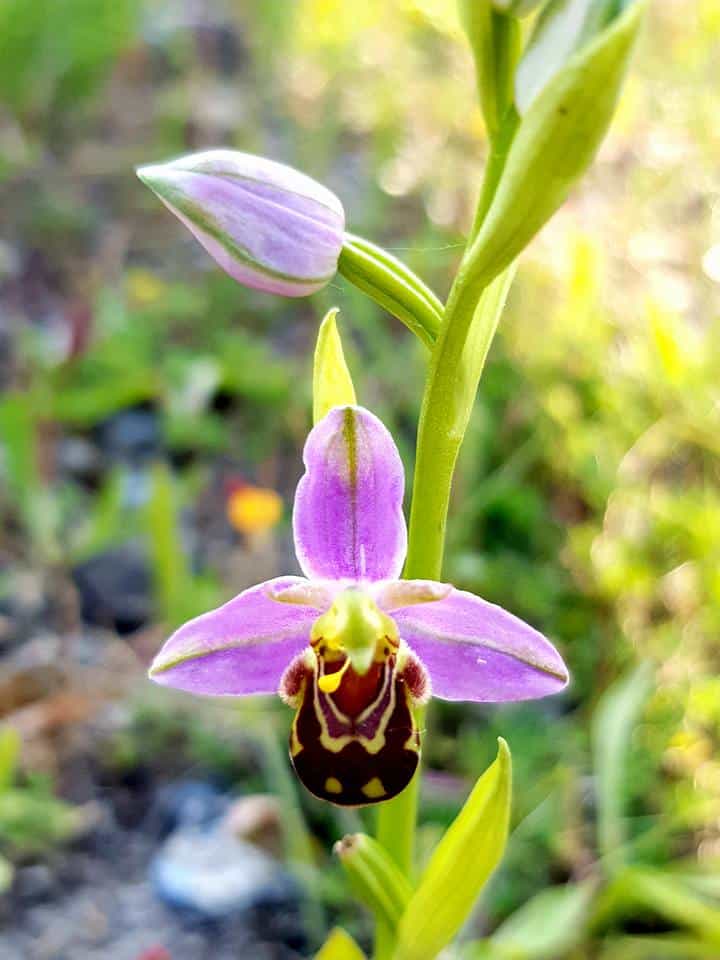
Just look at it. Wow. I never knew plants could mimic other species until I found Bee Orchids exist. It boggles my mind to think about how a plant is so crafty that it can evolve to look like another bee is visiting the flower. The deception goes even further because not only does this flower look like the bee it is hoping to attract to pollinate it, but it also emits a female bee scent. Several Orchid species have this strategy. It’s thought that the aim of this mimicry is to trick a passing male bee into mating with the “fake bee” to further increase chances of pollination. Isn’t that amazing?
Green-winged Orchid
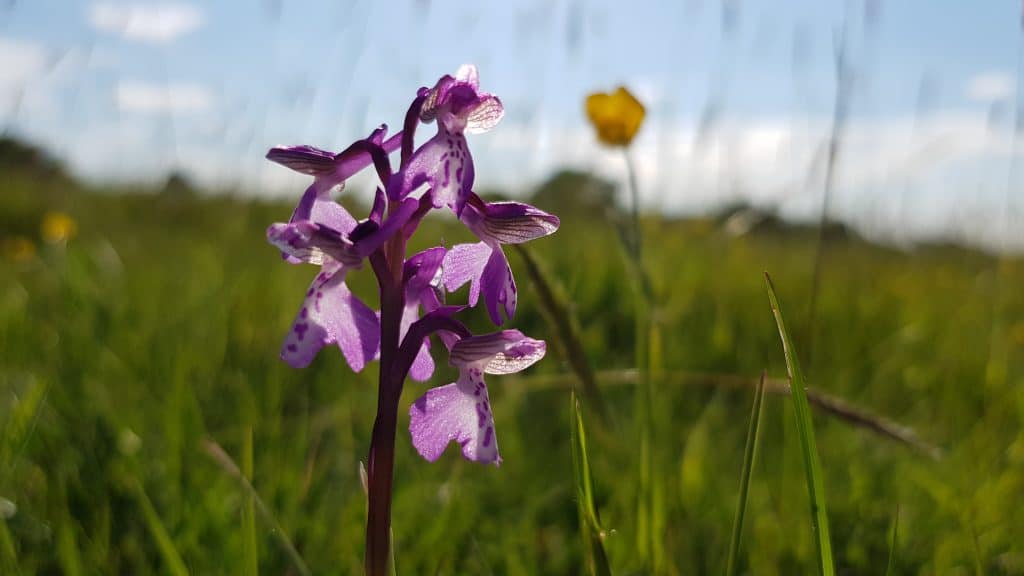
This near-threatened Orchid can be seen in May and has delightful pink flowers with green veins running along some of the petals, leading to its other name “Green-veined Orchid”. Like all Orchids, their seeds do not contain enough food reserves to germinate on their own. So, they must form partnerships with a mycorrhizal fungus to grow. The loss of these fungi due to changes in farming practices and herbicide use explains why species like this are declining.
#NoMowMay
I hope I’ve persuaded some of you to kick back with a brew instead of going out with the lawnmower this month. It’s not too late to join in No Mow May. If you do give it a go, Plant Life would love to hear about the flowers that have sprung up in your garden and the wildlife it attracts, and so would we! You can take part in the citizen science project (link above) or use the hashtag #NoMowMay to spread the word and show off your wildlife friendly gardens. Have fun and check out our Bug Garden on your next visit. You’ll find even lots of inspiration for re-wilding your garden in there!
